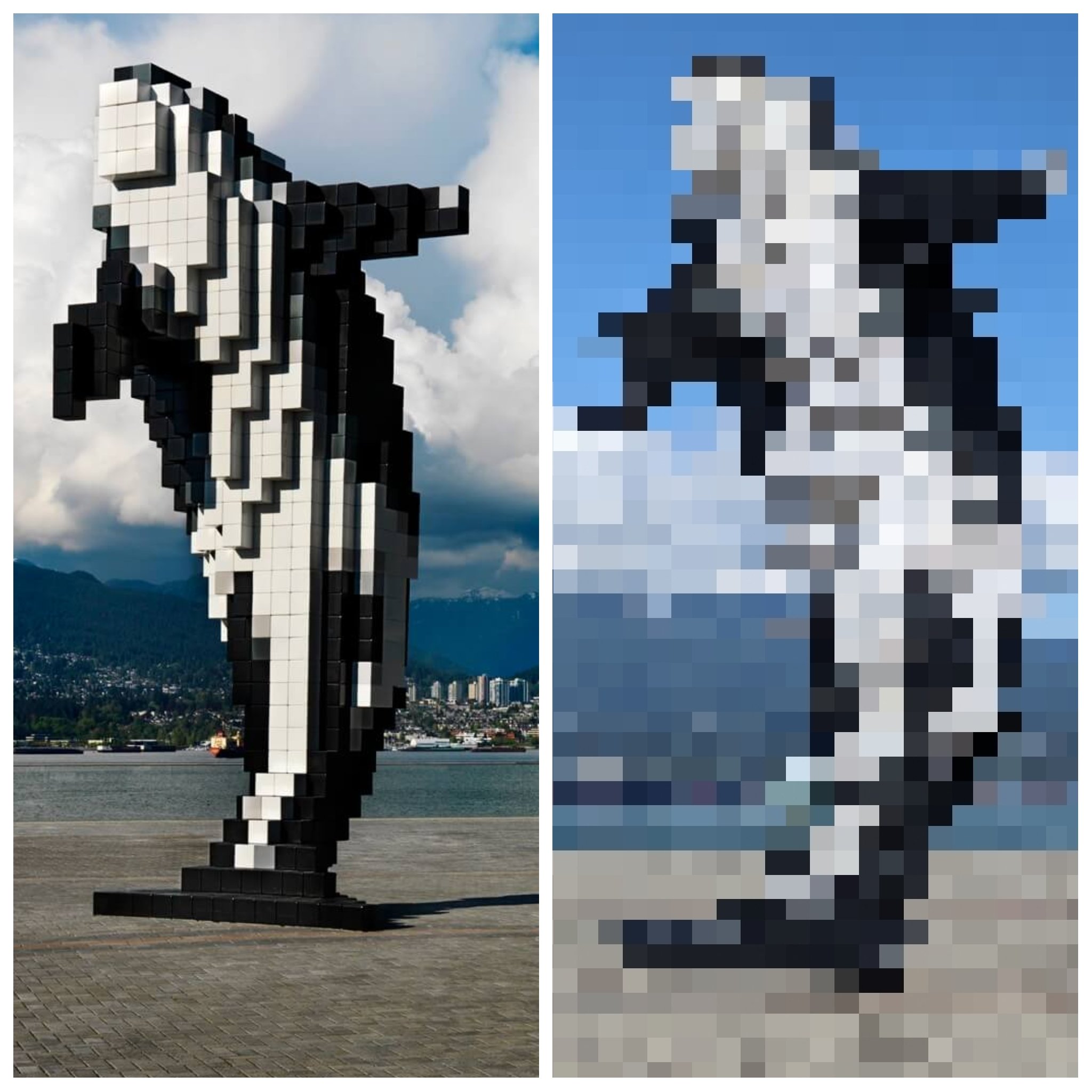digital orca: revisionism
One of Vancouver’s most notable public artworks is Douglas Coupland’s ‘Digital Orca’.
Installed at the Vancouver Convention Centre, it’s located in a spot frequented by tourists and locals alike, along the harbourfront. I often walk by it and observe how people interact with the sculpture, considering how it lives on in people’s social media posts as a symbol and avatar for the city of Vancouver. That is where its true function lies - not in the immediate experience of its presence but in the mediated representation for which it stands.
That is described on a nearby didactic panel that reads:
The ‘Digital Orca’ sculpture breaks down a three-dimensional Orca whale into cubic pixels – making a familiar symbol of the West Coast become something unexpected and new. This use of natural imagery modified by technology bridges the past to the future. It speaks to the people and activities that created Vancouver’s thriving harbour culture, while addressing the massive changes reshaping the BC economy. The sculpture’s metal construction and lighting components evoke the daily moods of the harbour and the diversity of those who work there.
Douglas Coupland 2010
Digital Orca does not bridge the past to the future. It connects the concepts of history and natural imagery with the past, namely - the third (8bit) and fourth (16bit) generation video game consoles on the late 1980’s and early 1990’s. Orcas are not subjects of the past, but their appearance in Burrard Inlet, where Vancouver’s harbour is located, is rare today - pushed out by noise, pollution and industrialization. While cubic pixels insinuate references to technology and digital environments, this more accurately serves to trivialize the Orca within a playful environment of technology and the warm safety of a retro-digital past.
This is a public sculpture, installed outside and exposed to the elements. It has gathered moss, algae and stains in the wet, west coast weather. While likely unintentional, this places an unavoidable lens on the sculpture that completely contrasts with digital reality and becomes an inescapable trap of logic. When initially installed, as a shining work of steel, it more closely resembles its digital inspiration; but now, it is showing its age with algae and moss growing on it which further undermines its meaning.
Language is often used not so much to explain art - but to justify it. What’s justified here is not the legitimacy of the sculpture, but the bias of the setting in which it is awkwardly located - as a bridge to the past. As a device that “speaks to the people and activities that created Vancouver’s thriving harbour culture” - these are the very things responsible for the Orca’s retreat from the inlet.
Lastly, the ‘diversity of those that work there’ feels like a forced fit to tick the box. These are unionized environments, responsible for the transition of millions of dollars worth of GDP into and out of the Canadian economy.
This is the unavoidable irony of Digital Orca through the written context.
In plain language - The sculpture looks cool. It’s life-size, and it has a presence that attracts people to approach it. It’s well positioned within a plaza overlooking the Vancouver harbour that tugs at the cinematic need to document or photograph it. It speaks to a commonly used symbol of Vancouver and the Pacific Northwest, removed from its place in a natural environment through a technological transformation and digital representation. You won’t find a real Orca here anymore, or if you do, it’s newsworthy. They have been pushed out by technology.
This sculpture is not a bridge, it is a memorial. The problem is that it doesn’t know that.
